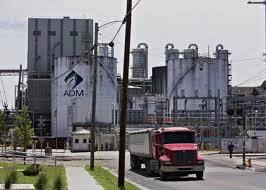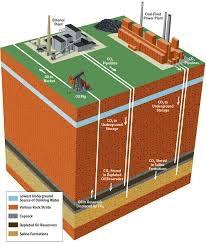The National Energy Technology Laboratory of the Department of Energy, has funded a $281 million demonstration project at an ADM plant in Decatur, IL. over a number of years. The program represents the collaboration between ADM, Schlumberger Inc. and the Illinois State Geological Survey. The project effectively captured only 10 to 12 percent of CO2 produced in ethanol production with the remainder vented to the atmosphere. The Department of Energy claims that 2.8 million metric tons of CO2 have been stored in contrast to the EPA value of 3.94 million metric tons.

Academics including Dr. William Burns, affiliated with Northwestern University, questioned the practicality of the project noting, “We have been providing these subsidies for a long time, billions and billions of taxpayer dollars and we still have very little to show for it.”
The ADM plant sequesters CO2 underground by injection into a sandstone formation. According to reports, there are as many as 150 applications to drill and sequester CO2 applying modifications of injection technology that is used to release oil from low-yielding wells.
If the ADM Decatur plant is representative of the U.S., a considerable quantity of CO2 is vented to the atmosphere. The subject plant produces 4.1 million metric tons of CO2 annually through fermentation of corn but captures approximately 10 percent of the quantity generated. From 2011 through 2022, the plant emitted 53,168,273 metric tons of CO2 and on average stored 7.4 percent amounting to 3,941,344 metric tons.

Dr. Charles Harvey of MIT questioned the benefit of sequestering CO2 at an ethanol plant and maintains that ‘diluting’ gasoline with ethanol is more detrimental than using gasoline as a vehicle fuel. This is based on the acreage needed to produce corn that is fermented with CO2 emissions and by combustion in vehicles. Dr. Harvey notes, “If our interest is in using government resources to reduce CO2 emissions, that money would be much better spent not making ethanol.” He added, “You’d really be better off just replacing those cornfields with solar panels. You’d get a lot more reduction and you get cheaper electricity.”
According to Brendan Givens, Oil and Gas Watch reporter for the Environmental Integrity Project, the ADM facility in Decatur operates at a greater level of efficiency than other plants resulting in proportionately higher volumes of CO2 released than many facilities in operation.
 Despite the self-laudatory claims by the Renewable Fuel Association, ethanol does not contribute to energy independence and is demonstrably detrimental to the environment. The entire ethanol industry owes its survival to government mandates and indirect supports. Despite science, logic and economics ethanol production persists at the expense of all who breathe, eat or ride only by virtue of the self-interest of corn-state legislators in Congress.
Despite the self-laudatory claims by the Renewable Fuel Association, ethanol does not contribute to energy independence and is demonstrably detrimental to the environment. The entire ethanol industry owes its survival to government mandates and indirect supports. Despite science, logic and economics ethanol production persists at the expense of all who breathe, eat or ride only by virtue of the self-interest of corn-state legislators in Congress.